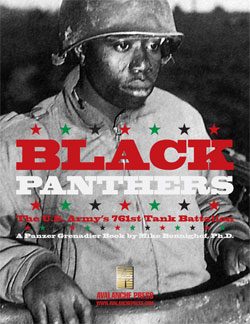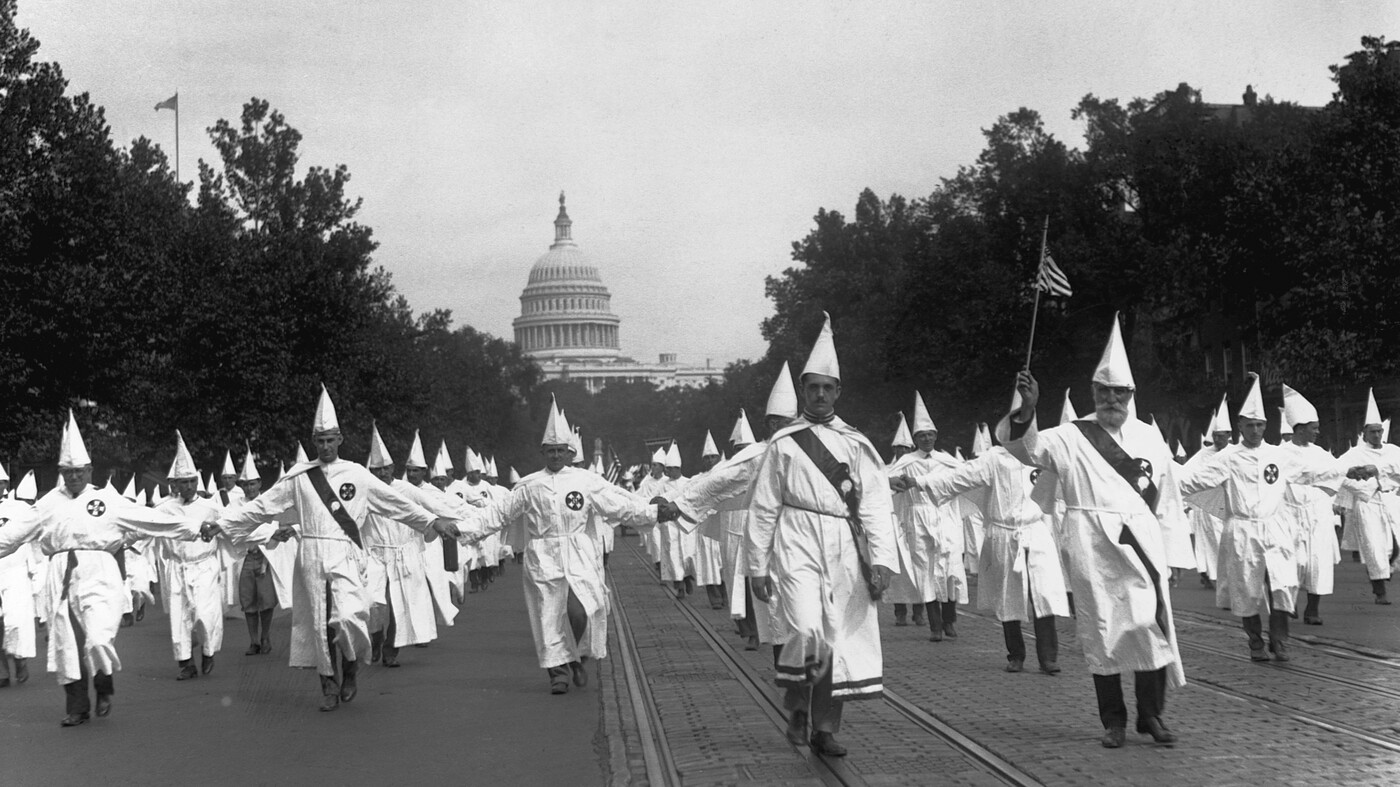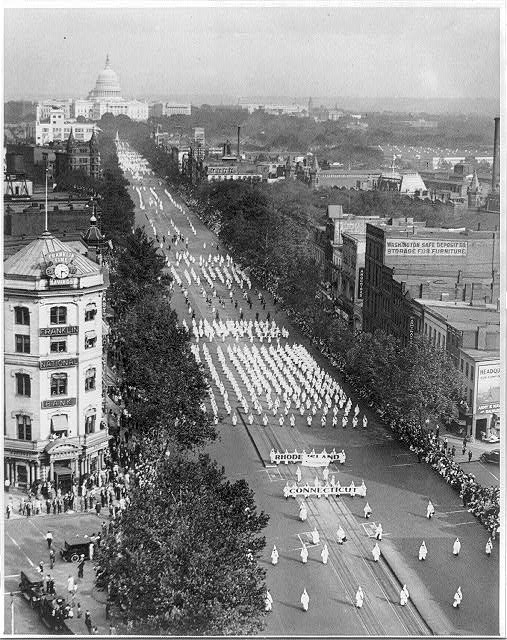| Race in America:
Klan Scam
By Mike Bennighof, Ph.D.
February 2025
 The Ku Klux Klan has all the defects of clandestine and reactionary organizations without their strengths. It has the mysticism of Freemasonry, the mummeries of Catholicism, the brutality of Fascism, the illegality of its 568 various Klaverns, but it has neither doctrine, nor program, nor vitality, nor discipline. The Ku Klux Klan has all the defects of clandestine and reactionary organizations without their strengths. It has the mysticism of Freemasonry, the mummeries of Catholicism, the brutality of Fascism, the illegality of its 568 various Klaverns, but it has neither doctrine, nor program, nor vitality, nor discipline.
- Ho Chi Minh, 1924
It was all a scam.
America’s best-known racist organization, the Ku Klux Klan had been founded after the Civil War by former Confederate soldiers who at first took pleasure in donning white sheets and pretending to be ghosts as they frightened newly-freed Black people. Soon they moved on to murdering them.
After roughly five years of terrorism against Blacks and the handful of whites who supported emancipation and Black civil rights, federal law enforcement crushed this first version of the Klan. Within a few more years, white racists would take power directly in state capitols across the South and conduct their terror through official means.
 But then came The Birth of a Nation. But then came The Birth of a Nation.
D.W. Griffith’s movie, released in 1915, is widely regarded as also marking the birth of modern cinema. It clocks in at three hours, by far the longest film released up to that time. A world-wide sensation, it proved immensely profitable and was the first movie screened in the White House, by staunch racist Woodrow Wilson.
The story of two white families, one Northern and one Southern, their fates entwined by events would be mined by later filmmakers more than once. Noble Confederate Ben Cameron defends the honor of Southern women from rampaging Black American soldiers (portrayed by white actors in blackface). But the war ends in a Confederate defeat, and Ben returns home to find that drunken Blacks are now in charge of South Carolina, having seized power by stuffing ballot boxes and invalidating white votes. They chiefly use their power to pursue sex with white women and to eat fried chicken.
To uphold the purity of Southern womanhood, Ben founds the Ku Klux Klan. Noble Klansmen pursue and lynch a roguish Black would-be rapist, whose pure would-be victim tossed herself off a cliff rather than submit to his savage embrace. The brave Klan leader is pursued by the Black militia, but just in time the Klan arrives to save the day. Confronted by the noble white-clad mounted Klansmen, Black voters flee the polls and white rule is restored as the Northern and Southern white characters marry one another under the benevolent gaze of Jesus.
The movie proved a sensation, and its story lives on more than a century later as “history” according to some. William Joseph Simmons, a 35-year-old serial failure, organized groups of friends to dress themselves and their horses like the movie characters and parade to theaters showing The Birth of a Nation. Movie theaters caught on to the marketing tactic, and held Klan parades to celebrate the movie and dressed their ushers in white robes and hoods.

The Klan marches in Binghampton, N.Y. in the 1920’s (yes, the 1920’s).
Not content with cosplay, Simmons set out to resurrect the Ku Klux Klan. On Thanksgiving Day 1915, Simmons and a group of friends, including two aged veterans of the first Ku Klux Klan, donned white robes (an artifact of the movie, not the actual first Klan) and burned a cross (also a movie innovation not practiced by the old Klan) atop Stone Mountain, Georgia, just outside Atlanta.
For the next five years Simmons and his boys held parades (something else that came from the movie, not the original Klan) and burned a few crosses, but membership stagnated. And then Simmons hired a public relations firm, the Southern Publicity Association run by Elizabeth “Bessie” Tyler and Edward Clarke. In exchange for 25 percent of the $10 initiation fee (just over $164 in 2025 dollars), Tyler and Clarke set out to build a nation-wide organization.
They did it through what would become known to later generations as multi-level marketing. To truly become nation-wide, the two realized that the Klan had to expand its hate. Not enough potential members outside the South carried enough hatred for Blacks to fork over their ten bucks. And so they expanded the list of those who white, Christian Americans should hate: not just Blacks, but immigrants, Catholics, Jews, Mexicans and labor unions.

Washington, D.C. August 1925.
Their key innovation came in how they would sell this expanded hate. Organizers known as Kleagles were responsible for direct recruiting; they would get a cut of $4 for every new member, or Ghoul, they signed up. Statewide recruiting was in the hands of the King Kleagle, who took $1, and regionally coordinated by the Great Goblin, who took fifty cents. Two national leaders known as Imperial Wizards and the national leader, or Grand Wizard, shared the remaining two bucks.
Members weren’t just one-time cash cows; they had to renew every year at the cost of $5, distributed the same way as their sign-up fee.
And of course, there was merch. A Klansman could not just show up in a bedsheet; he had to purchase an official Klan robe and hood ensemble for $6.50 ($106.99 in 2025 cash). They could also buy other Klan-approved items including Bibles, swords, life insurance, dry-cleaning services for those spiffy white robes, helmets and candy (yes, candy) with Klan-logo wrappers. And, of course, repeated screenings of The Birth of a Nation.
Tyler lost her argument to expand membership to women: white women, she claimed, were just as hate-filled and gullible as white men and the group could double their income. This iteration of the Klan would remain a boys-only club, but many chapters formed women’s auxiliary groups.
 By 1924, the scam was churning up at least $25 million a year (that’s $411 million in real 2025 money). Simmons, Tyler and Clarke all became fabulously wealthy, but Simmons lost his influence after he testified before Congress in October 1921 regarding Klan-inspired violence. Clarke was ejected over his long-running affair with Tyler, which was exposed during divorce proceedings. Tyler hung on for two more years before she too was forced out. By 1924, the scam was churning up at least $25 million a year (that’s $411 million in real 2025 money). Simmons, Tyler and Clarke all became fabulously wealthy, but Simmons lost his influence after he testified before Congress in October 1921 regarding Klan-inspired violence. Clarke was ejected over his long-running affair with Tyler, which was exposed during divorce proceedings. Tyler hung on for two more years before she too was forced out.
By 1925, the Klan had reached its high-water mark. Membership peaked at nearly five million, and millions more who couldn’t pay the $16.50 to join up sympathized with or supported its stated goals. At least 50,000 robed Klansmen marched through Washington D.C. in August and September. Under new Grand Dragon Hiram Wesley Evans, a Texas dentist, the Klan tried to make itself a political rather than vigilante force, as random acts of terror and murder were bad for business. Politicians sought their endorsement, and in 1924 they began to abandon the Democratic Party, long the bastion of Southern white racism, for the Republicans. In the 1924 presidential election, Republican Calvin Coolidge was the only candidate not to condemn the Klan. When he won, the Klan claimed credit, even though it appears that most Klansmen actually voted for the Democratic nominee John W. Davis who carried all of the formerly Confederate states (and only those states).
And then things fell apart. Indiana Grand Dragon D.C. Stephenson seceded from the national organization, and put his rival KKK firmly behind the Indiana Republican Party. “I am the law in Indiana,” the failed coal salesman declared. “The fiery cross is going to burn at every crossroads in Indiana, as long as there is a white man left in the state.”

These days, they say this about us on the internet instead.
As it turned out, Stephenson was not actually the law in Indiana. In a sensational 1925 trial he was convicted of forcibly intoxicating, raping and murdering a young woman named Madge Oberholtzer. Oberholtzer had survived just long enough to dictate and sign an account of her murder. Testimony and documentary evidence from the trial showed that many Klan leaders in Indiana and elsewhere were alcoholics (this being the age of Prohibition, which the Klan firmly endorsed) and conducted frequent sexual affairs. The revelations, expanded by subsequent newspaper investigations, exposed the Klan as a money-making scheme. Membership plummeted, and the Second Klan never recovered its numbers or influence. By 1930, its rolls had dropped to a mere 30,000; the organization finally collapsed for good in 1944 under a federal lien for $685,000 in back taxes owed.
The Second Klan had briefly captured the national imagination, but while lynchings and racist terror were carried out in its name, its leaders were primarily concerned with securing cash, booze and sex for themselves. They marched to drum up new paid memberships, but generally shied away from openly endorsing murder – that, they understood, could threaten the gravy train. They merely profited from the racist violence of the 1920’s.
A Third Klan, far more interested in murder than money, would appear in the 1950’s in reaction to the Civil Rights Movement, but that’s another story.
The full series is here:
• Race in America: Founded on Slavery
• Race in America: Civil War
• Race in America: Jim Crow
• Race in America: The Black Doughboys, Part One
• Race in America: The Black Doughboys, Part Two
• Race in America: Red Summer
• Race in America: Tulsa
• Race in America: Klan Scam
• Race in America: Strange Fruit
You can order the Black Panthers Historical Study right here.
That’s both history and scenarios.
Please allow an extra six weeks for delivery.
You can order the Separate, But Heroes book right here.
That’s just the exciting history.
Please allow an extra six weeks for delivery.
Sign up for our newsletter right here. Your info will never be sold or transferred; we'll just use it to update you on new games and new offers.
Mike Bennighof is president of Avalanche Press and holds a doctorate in history from Emory University. A Fulbright Scholar and NASA Journalist in Space finalist, he has published an unknowable number of books, games and articles on historical subjects.
He lives in Birmingham, Alabama with his wife and three children. He misses his dog, Leopold.
Want to keep Daily Content free of third-party ads? You can send us some love (and cash) through this link right here.
|
